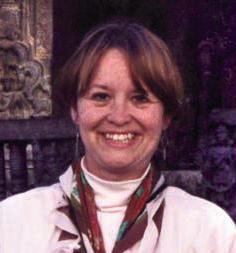Logan M. Shannon has a BFA in Studio Art with a minor in English from the University of Iowa and an MFA in Jewelry + Metalsmithing from Rhode Island School of Design. Her essay, “The Gold Standard,” appears in the Fall 2019 Intima: A Journal of Narrative Medicine.
I’ve often wondered if having a medical degree would have better prepared me for my husband’s illness and eventual liver transplant. Would I have felt more qualified to care for him and advocate for him if I had studied hepatology instead of metalsmithing? Would my preparation for my own living donor surgery have been different if I had more than a rudimentary knowledge of what the liver does and how patients who undergo major abdominal surgery respond to traditional pain medications?
Orly Farber writes about her experience as a medical student and the daughter of a patient in “Watch and Wait” from the Spring 2019 issue of Intima. In it she describes a bifurcation, as her body travels to medical school, and her mind focuses on a different hospital, the tests her father will receive there, and the treatments he will undergo. The study of his disease becomes an extracurricular for her, long nights of studying coursework are bracketed by studying her father’s illness, but her fear and sadness about his illness and suffering don’t abate. I see in her experience similarities to my own experience, and my essay (“The Gold Standard,” Fall 2019 Intima) despite having never studied medicine: a desire to understand what a loved one is going through, to be able to answer their questions, to be able to take away at least some of the fear and pain.
I longed for a practical and high level understanding of medical terminology, tests, and what the results of those tests may indicate before and after my husband’s transplant and my own liver resection surgery. I think it would have helped me feel not quite as lost and confused as I waited to see what would happen. But there is also a universal helplessness that comes with watching someone you love be subjected to those tests and be on the receiving end of a litany of jargony language that more often manages to obfuscate rather than enlighten or soothe. Even if you are fluent in medical terminology, even if you’ve ordered the same test for a patient before, watching someone you love be at its mercy will always be a challenge.
The complexity of the health care machine and the diseases we humans endure can feel debilitating, and while specific knowledge can do much to ease the burden, we are all still doing good work when we embrace our emotional and empathic selves while caring for others.
Logan M. Shannon has a BFA in Studio Art with a minor in English from the University of Iowa and an MFA in Jewelry + Metalsmithing from Rhode Island School of Design. She is currently writing a memoir about her experience as a living liver donor and is generally trying to convince everyone she meets that the liver is, by far, the best organ. Logan lives in New Hampshire with her husband, and their prolific sourdough starter, Seymour. Her essay, “The Gold Standard,” appears in the Fall 2019 Intima.









